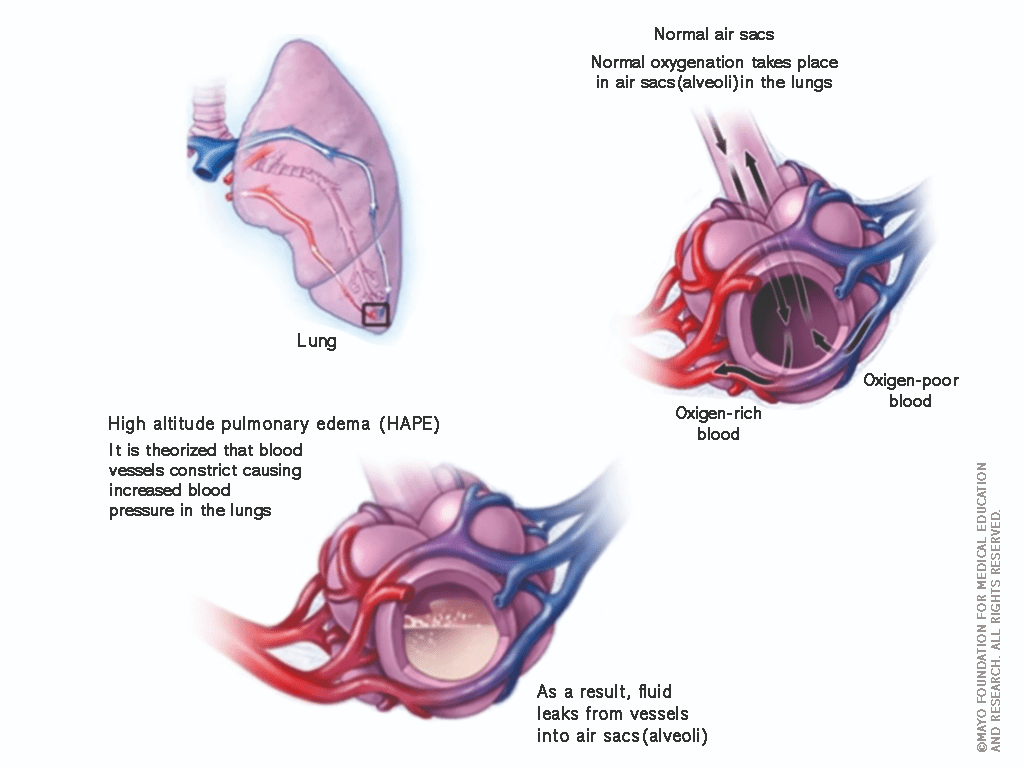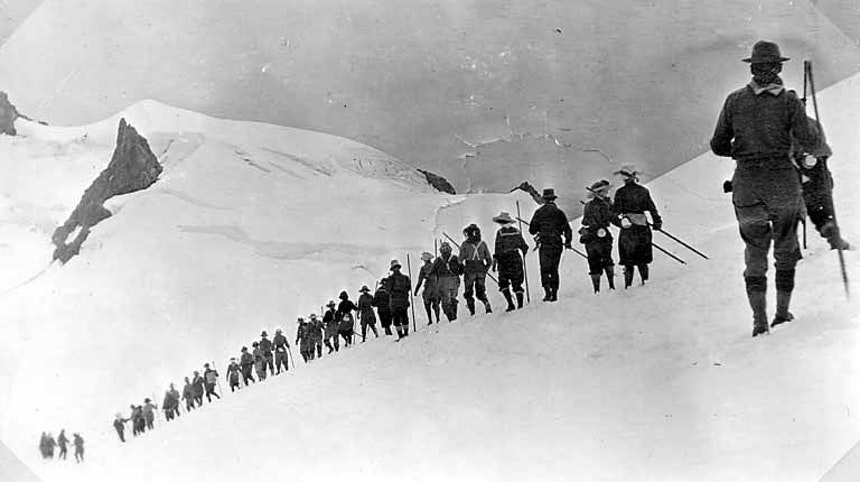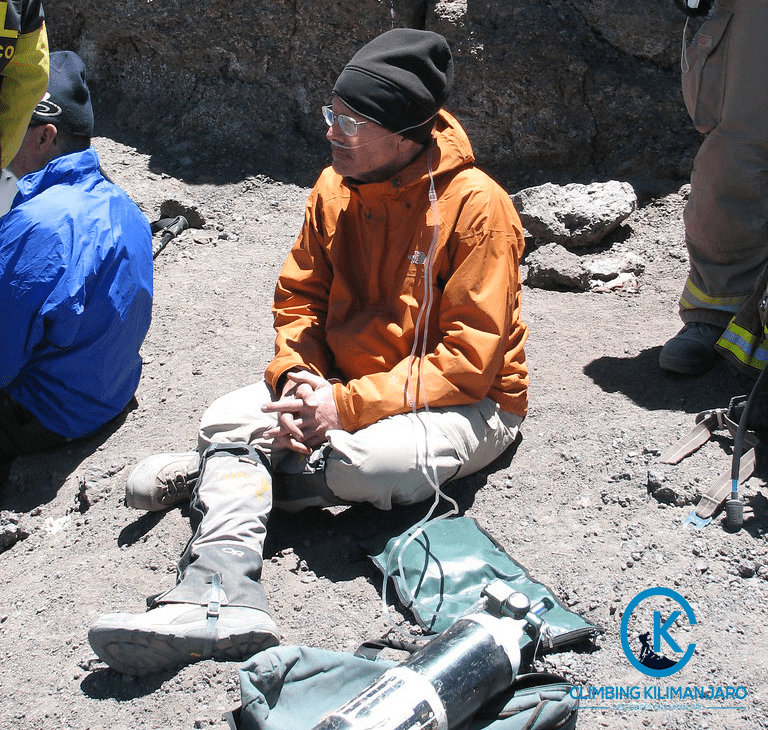High Altitude Pulmonary Edema

What is HAPE?
Ascending to high altitudes leads to a change of the ambient air pressure that we are acclimated to. As well as the amount of available oxygen in the air. This results in hypoxia. Which can increase the pulmonary artery pressure, cause capillary stress, and increase interstitial fluid. This fluid can be observed by ultrasound.
Combined with exaggerated hypoxic pulmonary vasoconstriction. Lung capillary walls begin to fail as they leak Red Blood Cells at higher than normal rates.
A victim of HAPE may notice a frothy pink substance that is being coughed up.
Who is at Risk?
HAPE and Re-entry HAPE can occur in otherwise healthy individuals. Those who travel from low to high, or high to low elevations are particularly susceptible. (Although cases of HAPE at lower elevations are much rarer.) HAPE and Re-entry HAPE can cause symptoms as extreme as sudden death. Signs and symptoms typically occur within 2-5 days of arrival. (Re-entry HAPE is when a traveler living at high elevation returns home from a low elevation destination.)
Rapidly ascending greater than 2500m in a short time greatly increases the chances of developing HAPE. The risk is even more so multiplied by strenuous activity if it is included in a traveler’s itinerary. Because of the lack of oxygen and dramatic change in air pressure.
A Brief History

In the early days of pioneers and fur traders, many people were thought to have died of pneumonia. The number of misidentified cases of HAPE that lead to death is unknown. Chest x-rays of HAPE victims and people who succumb to pneumonia can be very difficult to differentiate. Like Acute Respiratory Distress Syndrome (ARDS). HAPE and re-entry HAPE are non-cardiogenic oedemas.
Signs and Symptoms of HAPE
Symptoms: at least two of:
-
Shortness of breath at rest
-
Cough
-
Weakness or decreased exercise performance
-
Chest tightness or congestion
Signs: at least two of:
-
Crackles or wheezing (while breathing) in at least one lung field
-
Central blue skin color
-
Tachypnea (rapid breathing)
-
Tachycardia (rapid heart rate)
Source: https://en.wikipedia.org/wiki/High-altitude_pulmonary_edema
Treatment

HAPE can be completely and easily reversed when symptoms are caught timely and treated. Unless medical treatment facilities with oxygen are readily available. The first thing one can do to improve the chances of victim survival is to get the individual to lower elevation. If in fact, a hiker deep in the wilderness was to succumb to HAPE. Sources indicate that the correct dosage of the drug nifedipine will help the victim stabilize for descent if immediate rescue isn’t viable.
Recovery time varies among individuals. With medical treatment and oxygen use on average victims recover within three days of the occurrence.
Prevention
HAPE presents itself within 2-5 days of the traveler’s arrival. It is rare that HAPE develops after day 5 of arrival. And after 1 week the risk is almost non-existent.
Slow ascent is the most prescribed method of ascent. For elevations above 9,800 ft (3,000 meters) the Wilderness Medical Society (WMS) advises a ‘sleep to ascent’ rate of no more than 1,600 ft (500 meters) per day. Followed up with a rest day every three to four days with no ascent.
Viagra, read the studies.